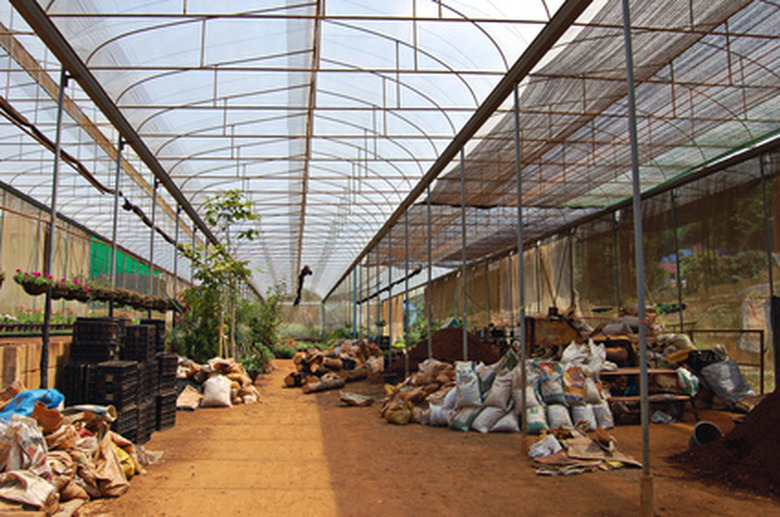What Are The Examples Of Inorganic Fertilizers?
When manufacturers list a fertilizer as organic, it means the nutrients were once part of, or created by, a living plant or animal. Inorganic fertilizers, on the other hand, are nutrients that living sources didn't produce. Plants require 16 different elements, whether from an organic or inorganic source, in order to thrive. Nitrogen, phosphorous and potassium are the three most important nutrients, alongside trace elements such as iron, boron and zinc. These elements take many forms, but manufacturers commonly use the same nutrient-releasing compounds in their inorganic fertilizers.
Ammonium Nitrate
Ammonium nitrate is 33- to 34-percent nitrogen. Its popularity decreased as urea became the preferred nitrogen source, but some fertilizer manufacturers prefer ammonium nitrate for its versatility. Ammonium nitrate quickly releases nitrogen to plants and is best used in late spring, when plants are putting on new growth. This compound is explosive and has strict production and storage requirements.
- When manufacturers list a fertilizer as organic, it means the nutrients were once part of, or created by, a living plant or animal.
- These elements take many forms, but manufacturers commonly use the same nutrient-releasing compounds in their inorganic fertilizers.
Ammonium Sulfate
An industrial byproduct, ammonium sulfate is 21-percent nitrogen and is the most acidifying of the nitrogen fertilizers, making it a good choice for highly alkaline soils. However, it is not as nitrogen-rich as ammonium nitrate or urea, and fertilizer manufacturers must add more of this compound to their product in order to reach the same nitrogen amount, increasing production costs.
Potassium Chloride
Potassium chloride is the most common source of potassium, according to the Michigan State University Extension. It is 60- to 62-percent potassium, the highest of the potassium fertilizers, and some products list it as muriate of potash. Depending on the mining and extracting process, potassium chloride granules vary in size, color and solubility.
Triple Superphosphate
Although diammonium phosphate and its attached nitrogen has increased in market share, triple superphosphate remains popular as a phosphorous source in granular fertilizers. Triple superphosphate, or concentrated superphosphate, is 46-percent phosphorous. Like potassium chloride, it is a mining product, consisting of ground phosphorous rock or limestone treated with phosphoric acid.
- An industrial byproduct, ammonium sulfate is 21-percent nitrogen and is the most acidifying of the nitrogen fertilizers, making it a good choice for highly alkaline soils.
- Like potassium chloride, it is a mining product, consisting of ground phosphorous rock or limestone treated with phosphoric acid.
